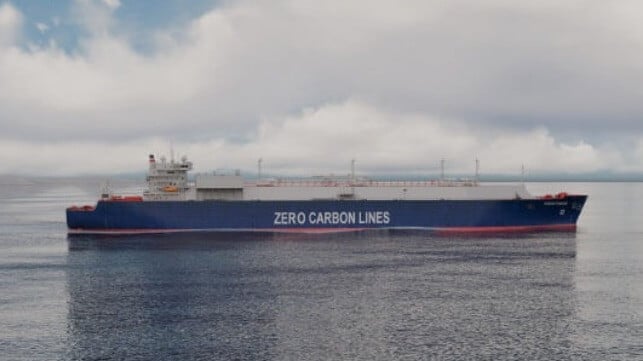ABS Study Concludes Nuclear Power is Suitable for Larger LNG Carriers

With advancements in nuclear engineering and the development of many types of advanced nuclear reactors, ABS concludes in a new report that there are many opportunities to implement the technology for commercial ship propulsion. While the work remains at a high level, they conceptualized the potential hazards and design requirements concluding that high-temperature, gas-cooled reactor (HRGR) technology would be suitable for larger LNG carriers.
The goal of the study was to explore the potential for LNG carriers and to create concept vessel designs to begin the design process. The U.S. Department of Energy awarded ABS a contract to research barriers to the adoption of advanced nuclear propulsion on commercial vessels. ABS researched the potential of advanced nuclear technology for maritime applications focusing on a small modular reactor on a standard LNG carrier. Previous studies investigated a nuclear-powered containership and a Suezmax tanker.
They concluded that the HTGR technology would allow faster transit speeds and offer zero-emission operations for an LNG carrier. There would also be no requirement to refuel, although the HTGR technology would need replacing approximately every six years.
“While this technology is well understood on land, adapting it for marine application is in its infancy. However, this study and the other research we have carried out clearly highlight its significant potential to address not only shipping’s emissions challenge but to deliver a range of other operational advantages to the industry,” said Patrick Ryan, ABS Senior Vice President and Chief Technology Officer.
The study was designed to help the industry better understand the feasibility and safety implications of nuclear propulsion and to support future development projects. They report that it provides important information on heat and energy management, shielding, weight distribution, and other design features for an LNG carrier with nuclear propulsion.
A nuclear-propelled LNG carrier ABS reports would have specific design features, with reactors placed at the rear of the vessel and batteries forward of the location occupied by fuel tanks on current vessels and a reinforced hull. Given design constraints, the HTGR technology would only be suitable for larger LNG carriers.
The study highlights that nuclear power would be an ideal means of drastically abating shipping emissions and can contribute to significantly more efficient ships in terms of transport capacity. It however also found that a high level of redundancy would be required which could decrease vessel performance and that the nuclear plant and fueling lifecycle need to be aligned with the vessel’s life.
They note that maturity and level of information currently available on these nuclear technologies remain low. They also find significant hurdles remain in public perception and international regulations before a nuclear-powered merchant vessel can be achieved.
